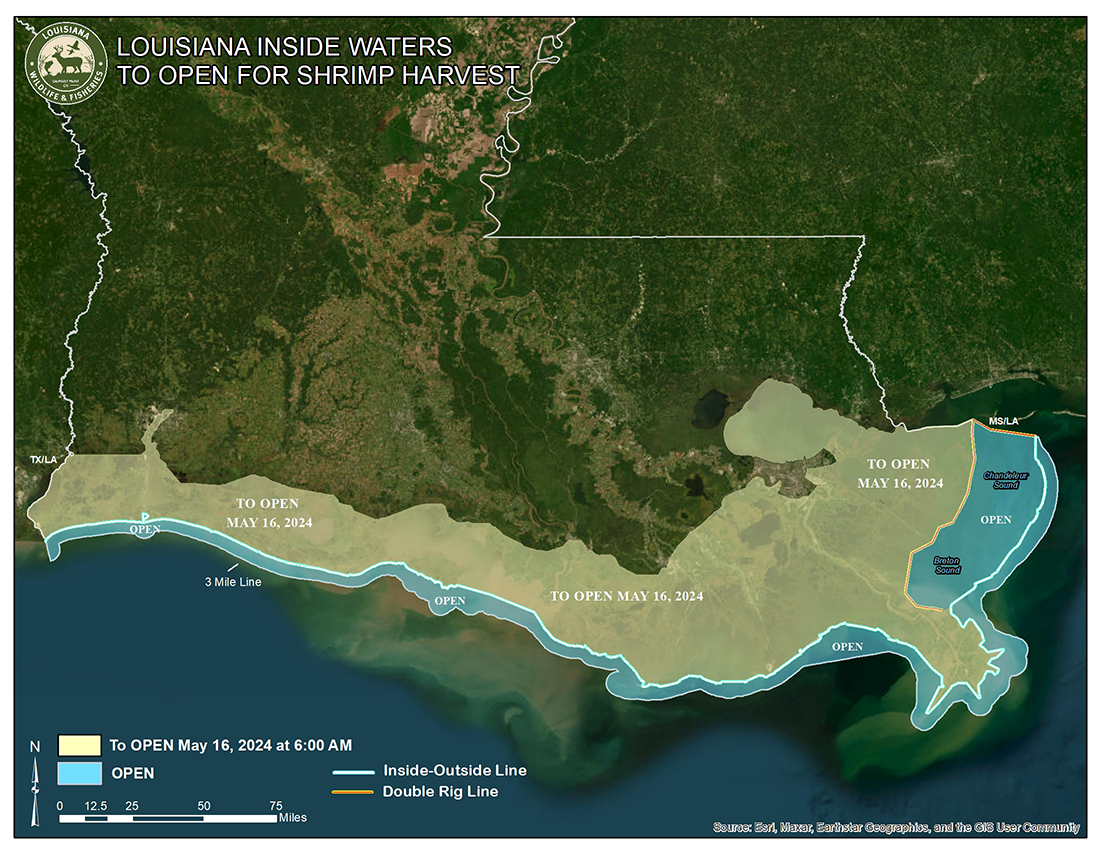Shrimp Season
Licensed fishermen may only harvest shrimp during open shrimp seasons (unless permitted to harvest live bait under a Special Bait Dealer's Permit).
The Louisiana Wildlife and Fisheries Commission sets shrimp seasons for Louisiana’s state waters by area according to LDWF’s recommendations based on environmental conditions and the growth rates, distribution, and abundance of shrimp. They also consider input from the Shrimp Task Force and other stakeholders.
In general, shrimp seasons by area are:
- Inside waters: open when enough market-sized shrimp are available in these waters for harvest. The spring/brown shrimp season generally runs May to July. The fall/white shrimp season is generally open mid-August to mid-December; some waters stay open into January.
- Outside waters: year-round, except from mid or late December to April or May in certain areas to protect small white shrimp and allow them to grow to market size. The Commission can close these waters at other times of the year if necessary.
- Federal waters off Louisiana: year-round (managed by the Gulf of Mexico Fishery Management Council and NOAA Fisheries).
Current Season
The Louisiana Wildlife and Fisheries Commission set the opening date within state inshore waters based on information provided by Louisiana Department of Wildlife and Fisheries (LDWF) biologists and public comments.
The Commission action sets the opening date of the spring inshore shrimp season as follows:
- All Louisiana inshore waters from the Mississippi/Louisiana state line westward to the Louisiana/Texas state line will open at 6 a.m. on Thursday, May 16, 2024.

How do we determine shrimp seasons?
LDWF biologists and managers recommend shrimp seasons based on a shrimp species’ annual life cycles and growth rates, which are heavily influenced by environmental conditions. LDWF biologists continually monitor shrimp populations and environmental conditions in Louisiana’s marshes, coastal lakes, and bays. At hundreds of sample locations, they tow trawls through the water, count and identify the species they catch, measure a random selection of the shrimp catch, and record the data. They also record water conductivity, temperature, salinity, and dissolved oxygen levels. They then compile the data and plug it into mathematical models. These models help biologists project when the majority of the shrimp population within each the state’s major estuarine basins will reach market size. The Commission uses these projections to determine when and where to open and close the shrimp fishery. Adjusting seasons in response to the conditions that influence shrimp populations helps fishermen have more productive shrimping trips.
